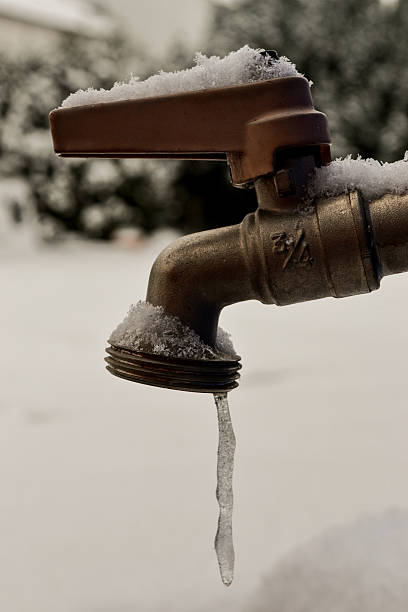Important Advice to Avoid Frozen Plumbing in Winter: Professional Guidance
Important Advice to Avoid Frozen Plumbing in Winter: Professional Guidance
Blog Article
Listed here down the page yow will discover more quality answers with regards to How to Prevent Your Pipes From Freezing.

Winter can ruin your pipes, especially by freezing pipelines. Below's exactly how to stop it from taking place and what to do if it does.
Introduction
As temperatures decline, the risk of frozen pipes increases, possibly resulting in expensive repairs and water damages. Comprehending how to stop frozen pipelines is important for property owners in cool environments.
Avoidance Tips
Insulating at risk pipes
Wrap pipelines in insulation sleeves or make use of warm tape to protect them from freezing temperatures. Concentrate on pipes in unheated or outside areas of the home.
Heating strategies
Maintain interior spaces sufficiently heated, specifically areas with pipes. Open up closet doors to enable cozy air to distribute around pipes under sinks.
Just how to determine icy pipes
Seek decreased water flow from taps, unusual odors or noises from pipes, and visible frost on subjected pipelines.
Long-Term Solutions
Structural adjustments
Consider rerouting pipelines away from exterior wall surfaces or unheated areas. Include extra insulation to attics, basements, and crawl spaces.
Updating insulation
Invest in top quality insulation for pipelines, attics, and walls. Appropriate insulation aids keep consistent temperatures and reduces the threat of frozen pipelines.
Protecting Exterior Pipes
Garden pipes and outside taps
Disconnect and drain garden hose pipes prior to wintertime. Install frost-proof faucets or cover outside taps with shielded caps.
Understanding Icy Pipelines
What triggers pipelines to freeze?
Pipes ice up when revealed to temperature levels listed below 32 ° F (0 ° C) for extended periods. As water inside the pipes freezes, it broadens, taxing the pipeline wall surfaces and possibly triggering them to rupture.
Dangers and damages
Frozen pipelines can cause water supply disruptions, residential property damages, and expensive fixings. Burst pipes can flood homes and trigger substantial architectural damages.
Indications of Frozen Piping
Identifying frozen pipelines early can stop them from bursting.
What to Do If Your Pipes Freeze
Immediate actions to take
If you suspect frozen pipes, keep taps open to soothe pressure as the ice melts. Use a hairdryer or towels soaked in warm water to thaw pipelines gradually.
Verdict
Avoiding frozen pipes needs aggressive procedures and quick feedbacks. By comprehending the causes, indications, and safety nets, homeowners can protect their plumbing during winter.
5 Ways to Prevent Frozen Pipes
Drain Outdoor Faucets and Disconnect Hoses
First, close the shut-off valve that controls the flow of water in the pipe to your outdoor faucet. Then, head outside to disconnect and drain your hose and open the outdoor faucet to allow the water to completely drain out of the line. Turn off the faucet when done. Finally, head back to the shut-off valve and drain the remaining water inside the pipe into a bucket or container. Additionally, if you have a home irrigation system, you should consider hiring an expert to clear the system of water each year.
Insulate Pipes
One of the best and most cost-effective methods for preventing frozen water pipes is to wrap your pipes with insulation. This is especially important for areas in your home that aren’t exposed to heat, such as an attic. We suggest using foam sleeves, which can typically be found at your local hardware store.
Keep Heat Running at 65
Your pipes are located inside your walls, and the temperature there is much colder than the rest of the house. To prevent your pipes from freezing, The Insurance Information Institute suggests that you keep your home heated to at least 65 degrees, even when traveling. You may want to invest in smart devices that can keep an eye on the temperature in your home while you’re away.
Leave Water Dripping
Moving water — even a small trickle — can prevent ice from forming inside your pipes. When freezing temps are imminent, start a drip of water from all faucets that serve exposed pipes. Leaving a few faucets running will also help relieve pressure inside the pipes and help prevent a rupture if the water inside freezes.
Open Cupboard Doors
Warm your kitchen and bathroom pipes by opening cupboards and vanities. You should also leave your interior doors ajar to help warm air circulate evenly throughout your home.
:strip_icc()/snow-outdoor-faucet-pipes-4af65d1e5e904fb1aa7bf74071fe5d89.jpg)
Do you appreciate more info about 6 Ways to Prevent Frozen Pipes? Write a remark below. We'd be delighted to listen to your views about this write up. We hope that you come back again in the future. Remember to take a moment to share this entry if you liked it. Thank you for being here. Revisit us soon.
Book Today! Report this page